Toward the close of the 1893 World’s Columbian Exposition in Chicago, The Critic invited twenty-five notable scholars, writers, and leaders of the day to offer their brief impressions of the World’s Fair. At such a monumental event with so many novelties … what impressed them the most? It is interesting how frequently these contributors sing the same notes as they rhapsodize about the fairgrounds at night and the illumination of the Court of Honor, praise (except for Henry Fuller!) the polite comportment of visitors, and lament the imminent loss of the White City architecture. The exhibition palaces impressed far more than exhibits inside them. The Midway is barely mentioned.
Collected and published in the magazine’s November 25, 1893, issue, these short impressions are reprinted below with the original introduction; brief biographical statements have been added to each.
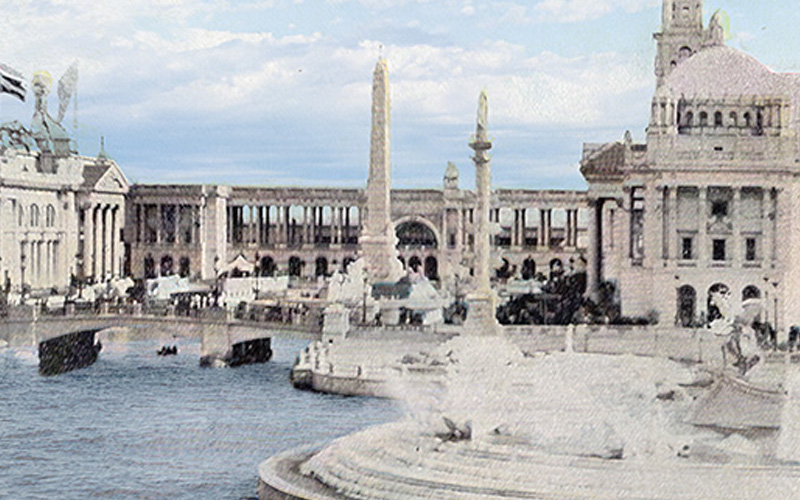
Impressions of the World’s Fair
In order that the White City on the shores of Lake Michigan might not vanish wholly before the trained observers and recorders of the land had set down their impressions of its beauty, we have asked some of the well-known men and women of letters who visited Chicago this summer to answer, briefly, the question— “What most impressed you at the World’s Fair?” The five-and-twenty letters here printed in reply attempt to seize the salient features of the marvellous show, and set them forth as briefly as words can do it. The conciseness of most of the replies and the vividness of many leave nothing to be desired nothing, at least, that could easily be expressed in prose. Our translation of the admirable letter of Madame Blanc (“Th. Bentzon”) preserves, we believe, the ideas she meant to convey, even though it may have lost somewhat of the author’s charm of style. It is pleasant to know that Mr. Stedman’s wish (shared by everyone) that the Art Building might be preserved as a lasting memorial of the Fair, is to be gratified. The signature “S. F. Smith” to one of the longer and more interesting of the letters may not generally be recognized as that of the author of the hymn “America,” whose eighty-five years sit so lightly on his young heart and venerable head. It was of him, it will be recollected, that Dr. Holmes recorded the failure which occurred when “Fate tried to conceal him by naming him Smith.”

Marie-Thérèse Blanc
Marie-Thérèse Blanc (September 21, 1840 – February 7, 1907) was a prolific French novelist, journalist, essayist, and literary critic. Blanc usually wrote under the pseudonym Th. (Thérèse or Théodore) Bentzon.
* * *
Latest comer to the World’s Fair, I can only give voice to the bewildered impression, the dreamy recollection which lingers in my mind. The European expositions, of which, at different times, I made a conscientious study, had in no wise prepared me for a scene like this. Although more complete, more finished in detail, they failed to produce, as a whole, that illusion which in my memory seems akin to the mirage—mirage quickly evaporated, after the dazzling impression created by the first glance, as any truly magical apparition is apt to fade without warning. One wave of the wand and all is over: the diamonds are pebbles once more, the halls are empty—no more merrymaking! The princess, taking to flight, sees her garments shining like the sun fast changing into tatters.
Moreover, at the first breath of the autumn gale, solitude is felt in that Court of Honor whither, through an entire summer, the delegates of the world had flocked to the spectacles and entertainments of the place. Experts and amateurs alike had saluted with ardor, in its triumph, the most irresistible thing in the world—namely, youth—even though it work only the fugitive charm which we of France call beauté du diable. This, without doubt, gives an idea of the kind of beauty observable in the great buildings, which, after surprising us with the semblance of marble, are fated to fall in the dust, throughout a large area. But what matter, so long as they rival, during their brief reign, the beauty of Venice reflected in the mirror of her lagoons, where glide the light gondolas?
I do not care to know what these buildings contained. It displeases me to think that they had a useful purpose—or any purpose whatever. I know only that the Adriatic is not lovelier than Lake Michigan, and that a genuine inspiration has bidden to rise, by this limitless sheet of blue, the fairness of a phantom city ready to fade away into the blue heaven. The proposed burning of what remains upon the spot after the Fair would certainly realize in a superb way the fantasy of an artist; but the fantasy, if carried out, could easily turn to tragedy and take on Neronian proportions, however little the wind rose; and thus might perish the true Chicago together with her self-created poem of a day. Much hesitation will be felt in lighting too grand a bonfire, however great the temptation, since the most intoxicating success never causes a young republic like this to lose its head.
TH. BENTZON.
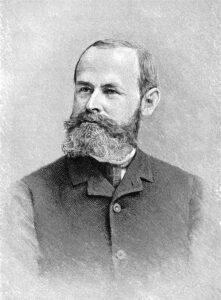
Daniel Garrison Brinton
Daniel Garrison Brinton (May 13, 1837 – July 31, 1899) was a Philadelphia surgeon and anthropologist who assembled a notable collection of artifacts related to Native American languages and cultures. He participated in the Congress of Labor, Social Science, and Anthropology.
* * *
It was the Sixth International Exhibition that I have attended; and, as one of the judges, I was there, first and last, nearly five weeks. What most impressed me, by contrast, was the serious, earnest demeanor of the vast crowds that daily flowed in and out the gateways. No frivolity, not even flânerie. In all that time I saw not a single inebriated person, witnessed not a single quarrel inside the Park. This was a revelation of national character that impressed many. A distinguished and much-travelled German scientist said to me:—“These crowds are the rudest in speech and the politest in action of any I ever saw.”
Of the exhibits, apart from mechanical devices, which were, and were expected to be, phenomenal, that of the Department of Ethnology and Anthropology most conspicuously surpassed those of all former fairs. It was also the newest to thousands of visitors. A stranger one day entered it, and addressing Prof. Putnam, its distinguished chief, said: “Mister, what’s in this building?” “This,” replied the Professor, “is the Anthropological and Ethnological Department.” “Well, mister,” said the stranger, eying the Professor quizzically, “you’ve got a corner on words, haven’t you?”
D. G. BRINTON
PHILADELPHIA.
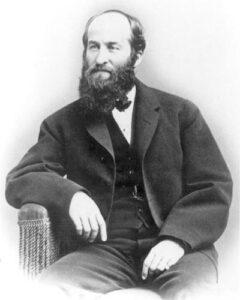
Noah Brooks
Noah Brooks (October 24, 1830 – August 16, 1903) was an American journalist, editor, and author, known for his The Boy Settlers: A Story of Early Times in Kansas (1891) and Abraham Lincoln: A Biography for Young People (1892). The first quote is from Shakespeare’s The Tempest, the second from Morte d’Arthur by Alfred, Lord Tennyson.
* * *
Like everybody else, I suppose, I was most impressed by the beauty and magnitude of the buildings of the World’s Fair. For once, the casket excited more admiration than the gems it was built to hold. But the exhibits were worthy of the structures. Now that a few weeks have passed since I saw the Fair, I find that the Fine Arts show and the Ethnological exhibit have the most lasting place in my memory. The pictures and statuary impressed me by their widely representative quality—representative of all nations and schools; and the Ethnological Section of the Exposition was a striking and unique object-lesson in the study of mankind. As for the White City (and please remember that my friend H. C. Bunner gave it that name), no words of mine can describe the impression that it made on my mind. While I was walking its magic streets I was continually quoting, with sadness, the lines:—
“And, like the baseless fabric of this vision,
The cloud-capped towers, the gorgeous palaces,
The solemn temples, * * * shall dissolve,
And, like this insubstantial pageant faded,
Leave not a rack behind.’’
And then there was another phrase ringing in my ears:—”Clothed in white samite—mystic, wonderful.” For “samite” read “staff,” and there you are!
NOAH BROOKS
NEWARK, N . J.
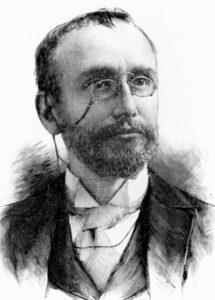
H. C. Bunner
The American novelist, journalist, and poet Henry Cuyler Bunner (August 3, 1855 – May 11, 1896) visited the fairgrounds in Jackson Park during construction in the summer of 1892. In his essay “The Making of the White City,” he coined the enduring nickname for the Fair.
* * *
I was not at the World’s Fair this summer; I have not seen it since I christened it “The White City.” I was in Europe all the summer, and what most impressed me there was the fact that the architects of the White City were better architects than all of the living and most of the dead men on the other side. Of which I was glad.
H. C . BUNNER
NUTLEY, N. J.
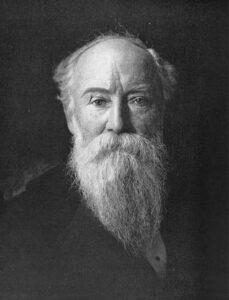
John Burroughs
John Burroughs (April 3, 1837 – March 29, 1921) was an American naturalist, conservationist, and nature writer. He participated in the Congress of Authors at the 1893 World’s Fair. His cabin “Slabsides” still stands in West Park, New York, and is designated a National Historic Landmark. The nickname “Dream City” was coined by Mrs. Candace Wheeler, not by Burroughs.
* * *
What most impressed me at the great Fair, after that superb group of buildings, like an architect’s dream—”dream city,” I called it—was the decorum of that immense crowd. It was truly remarkable. The people were as staid and quiet as at a Sunday-school picnic; not one drunken, or noisy, or unruly person did I see during my six days and two nights at Jackson Park. It was a little ominous to see the people behave so well. Is all sense of fun and frolic, all hilarity and conviviality dying out of the race? The crowds went about with a business-like air; they had come to see the Fair, and they meant to get the worth of their money if possible.
As to the different things exhibited, outside of the Art Building, I was most impressed with the shaft and the screw of one of the great ocean steamers, which I saw in the Krupp Building. In its size and suggestion of power it seemed superhuman.
JOHN BURROUGHS
WEST PARK, N. Y.
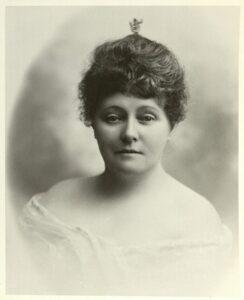
Mary Hartwell Catherwood
Mary Hartwell Catherwood (December 16, 1847 – December 26, 1902) was a Midwest author of popular historical romances, short stories, and poetry. She participated in the Congress of Authors and wrote of the Fair: “What shall we do when this Wonderland is closed?—when it disappears—when the enchantment comes to an end?
* * *
The Rabida Convent impressed me most. I suffered on account of not being able to translate the old Spanish easily. I could have spent years in the building. And next to it I loved the wild life of the Midway Plaisance. The grotesqueness and the queer groupings, under our sky, of Asiatics and other people born far away, were sights never to be forgotten. Their customs have a primitive dignity which our Western inventions lack. The Midway would stir the blood of the Puritans. Alas, that we shall never see these things again!
MARY HARTWELLCATHERWOOD
HOOPESTON, ILL.
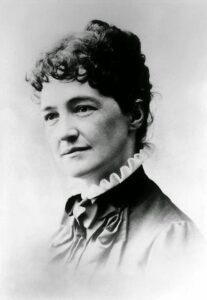
Elizabeth B. Custer
Elizabeth Bacon Custer (April 8, 1842 – April 4, 1933) was an American author and public speaker and widow of Gen. George Custer of the U. S. Army.
* * *
I am afraid I cannot stand a Civil Service examination on the exhibits at the World’s Fair, because they all seemed to dwindle into everyday affairs compared with the beauty of the architecture and the water scenes of the Dream City. One beautiful early summer evening, when the sky was purpling and the Lake iridescent and green, I saw the minarets, domes and towers of the White City outlined against the hazy lilac of the western horizon. As night came on, the roofs of the buildings were suddenly bordered with soft electric light. The lagoons, the fountains, the jars of tropical plants in their terra-cotta vases, the illumined launches, the green of the velvet terraces, the red light on the dome of the Peristyle—making a crimson archway to the broader waters outside,—the voices of a trained chorus in a launch, the strains of a band in the distance, the happy tones of the people as they walked in and out of the corridors and about the statues, or leaned on the white balustrades that bordered the terraces—all these rare sights and sounds, this wealth of color and outline, seemed to me a scene of enchantment, an Arabian night in the nineteenth century. But a conventional New Yorker went farther. She said it was heaven.
ELIZABETH B. CUSTER
NEW YORK.
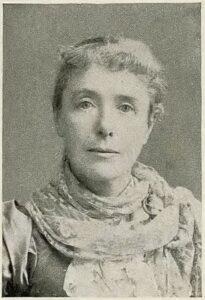
Kate Field
Journalist and editor Kate Field (October 1, 1838 – May 19, 1896) was an ardent booster for the Columbian Exposition. She relocated to Chicago and wrote a column about the Fair for the Chicago Herald, lectured at the World’s Auxiliary Congress, made many public appearances on the fairgrounds, and campaigned to save the White City from destruction.
* * *
If you read your Kate Field’s Washington religiously, as you should, you would know my opinion of the Fair, as I have worshipped at its shrine for six months. What most impressed me was the genius of Frederick Law Olmsted, the beauty of the architecture, the fertility of resource of Frank D. Millet, the enterprise of the local Directory, the good behavior of the masses and the lack of culture in the majority of our population. We are starved to death for lack of perennial expositions of beauty and art.
KATE FIELD
WASHINGTON, D . C.
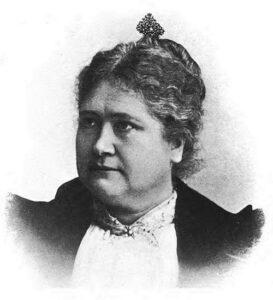
Alice French
Alice French (March 19, 1850 – January 9, 1934) was an American novelist and short story writer who wrote under the pseudonym “Octave Thanet.” French lectured on “The Short Story” and the Folklore Congress on July 14 and wrote two sketches of rural visitors to the Fair, “The Farmer in the North” and “The Farmer in the South” for Scribner’s Magazine.
* * *
I think that what impressed me most in the Columbian Exposition was the poetry of the architecture. It seemed the expression of the underlying aspiration of American art. If at the first cast of the eye I wished for something more daringly American, more original, that passed before it had time to shape itself into a regret, and I was glad that we had been content to accept the universal traditions of beauty and to adapt them to our own purpose. More and more I found the architecture significant as well as harmonious. And more and more its wonderful and pathetic beauty grew upon me. Next to the architecture and the landscape I was impressed by the crowd. It was a remarkable crowd, remarkable in its decorum, its courtesy and its rather solemn enjoyment.
ALICE FRENCH
DAVENPORT, IOWA.
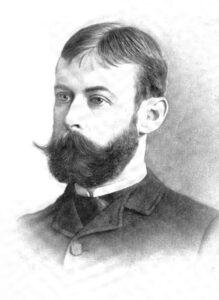
Henry Blake Fuller
Henry Blake Fuller (January 9, 1857 – July 28, 1929) was a Chicago-based novelist and short story writer widely known for his 1893 novel The Cliff-Dwellers.
* * *
I was most impressed by the perpetually untidy condition of the grounds,—so wide and so persistent was the dissemination of lunch and literature. We have learned how to contrive a magnificent artistic spectacle; perhaps we shall learn some time to treat such a thing with a decent degree of respect. It is easier to praise American good nature than American good manners.
H. B. FULLER
CHICAGO.
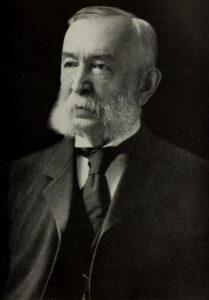
Daniel Coit Gilman
Daniel Coit Gilman (July 6, 1831 – October 13, 1908) was an American educator and academic who served as the President of Johns Hopkins University from 1875 to 1901. He presented a paper in the Congress of Manual and Art Education at the 1893 World’s Fair.
* * *
“The buildings in their environment,” is my ready answer; and if I should write one hundred and fifty words, I should only enlarge and reiterate this statement. Of course I mean the buildings constructed by the Commission. The co-operation of Commissioners, Superintendent of Public Works, landscape engineers, and architects is a lesson to the land,—a fine example of how to carry on important public works.
D. C. GILMAN
BALTIMORE, MD.
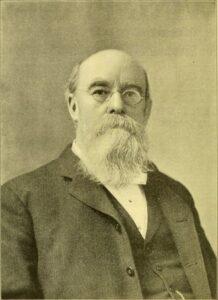
Washington Gladden
Washington Gladden (February 11, 1836 – July 2, 1918) served as the pastor of the First Congregational Church in Columbus, Ohio. As a national leader in the Social Gospel movement, he advocated for workers’ rights. He presented at the Congress of Moral and Social Reform at the 1893 World’s Fair.
* * *
On the whole, the people—the sober, decent, intelligent, self-respectful American people. Architecturally the Fair was a dream of beauty; the loveliest vision I have seen or shall ever see; and the management was a miracle of administrative ability; but after all, the crowds of representative citizens, that filled the grounds day by day, formed the most significant and the most inspiring spectacle. No man who studied that multitude can despair of the Republic.
WASHINGTON GLADDEN
COLUMBUS, OHIO.
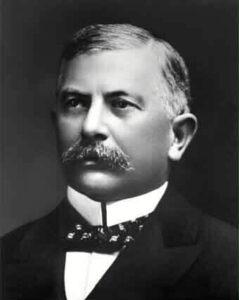
Col. Francis V. Greene
Francis Vinton Greene (June 27, 1850 – May 15, 1921) was an officer in the U. S. Army serving as a colonel of the 71st New York Infantry Regiment.
* * *
What most impressed me at the Fair was the Fair itself—its unrivalled site; its noble, harmonious buildings; its facilities for getting about, languidly in a gondola, hurriedly in the electric trains, exhausted in a chair. No one did or could study all the exhibits; chance or intention took everyone to some small part of them. What attracted my attention was the Transportation Exhibit from canoe to Campania and Victoria, from cart to bicycle and electric phaeton, from “Rocket” to “999”—here was exhibited practically every means of transport that has been used since commerce first began to exist and made civilization possible. The gathering of them under one roof was a most notable event.
F. V. GREENE
NEW YORK.
James Albert Harrison
James Albert Harrison (August 24, 1848 –January 31, 1911) was a Beowulf scholar who served as professor of English at Washington and Lee University from 1876 to 1895 before becoming professor of Romantic Languages and Literature at the University of Virginia, his alma mater.
* * *
A White Ladye shone on me in a dream,
Beside a white, white sea, and tost her veil,
When lo! a labyrinth loomed lily-frail
Of palaces and porticoes, and a gleam
Like moonshine fell on columns, pillars, stream
Meandering through the whiteness, on and on:
By day a dream the horn of Oberon
Blew faintly out of cloudland, did it seem:
And in the night an arctic city fair,
Whiter than is the White Tsar of the north:
Fragility’s most perfect reverie, forth
It sailed in wraithlike beauty on the air:
White as a tomb and milkwhite as the soul
Of him it glorified in saint’s pure stole!
J. A. HARRISON
LEXINGTON, VA.
 Julian Hawthorne
Julian Hawthorne
An American writer and journalist and the only son of novelist of novelist Nathaniel Hawthorne, Julian Hawthorne (June 22, 1846 – July 14, 1934) wrote several portraits of the 1893 World’s Fair, including “The Lady of the Lake.”
* * *
I fear I am too late in saying that I cannot tell you what I best liked at the Fair. Macmonnies’s seated Liberty; Lolo the Hawaiian Princess, the loveliest wild creature in the world,—the Court in sunlight and the Court illuminated,—the Fine Arts Building,—Cairo Street,—the Peristyle, the crown of fire on the Administration,—the search-lights striking across the sky and lighting up the fountain,—the illuminated boats gliding like animated jewels over the darkness of the outer Lake,—the Japanese exhibits,—the Persian wrestlers,—the Javanese dancers,—a boy from the Soudan, Boston baked beans and brown bread when I was hungry, and a score of other things were to me the best things. I was there too long to discriminate.
JULIAN HAWTHORNE
SAG HARBOR, N. Y.
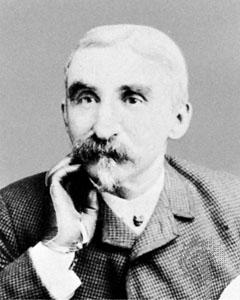
Joseph Kirkland
Joseph Kirkland (January 7, 1830 – April 29, 1894) was an American novelist, author of The Story of Chicago (1892), and literary editor of the Chicago Tribune. Kirkland met with distinguished visitors to the Fair and presented at the Congress of Authors.
* * *
At the Fair one met, at every turn, some form of bodily disability or deformity. Men and women tottering with age, babies encumbering poor parents, invalids sustained by patient friends, a blind man having on either arm a woman talking volubly, deaf-mutes with their quick glances and speaking gestures, even one girl (Helen Keller) blind, deaf and dumb, attended by her wingless guardian angel—these were all in evidence. Many, many of the rolling-chairs had crutches as part of their load, and the pat-pat-pat of the cripple’s cane broke the soft rustle of the Art Gallery.
The exceptional beings marked by cruel fate for suffering, seem to have been marked by kind friendliness for this one season of solace. Every community, every neighborhood, must have smoothed the path for its afflicted to the White City Beautiful.
Thanks to “the power not ourselves that makes for righteousness,” that man’s growth in the ages has not been alone a gain in strength, wealth and beauty, but also a glorious advance in benevolence.
JOSEPH KIRKLAND
CHICAGO.
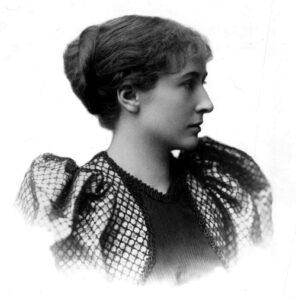
Harriet Monroe
Harriet Monroe (December 23, 1860 – September 26, 1936) was an American editor, scholar, literary critic, poet, and patron of the arts. An excerpt of her monumental poem “The Columbian Ode” was read at the Dedication Day Ceremony on October 21, 1892. After the Fair, she founded Poetry magazine and served as its long-time editor.
* * *
Of all things visible at the Fair, the beauty of the Court of Honor seemed to me the most impressive. But in the spirit of the place there were certain effluences still more imposing, though less definable. One was an overmastering sense of the power derivable from arts in sisterhood and men in brotherhood. And another was the onward thrill of it all—the feeling that this glory was the glory of sunrise, that this triumph marked not the climax but the beginning of a day full of light and love and beauty. Surely the most impressive thing about the Fair was not what it gave but what it promised.
HARRIET MONROE
CHICAGO.
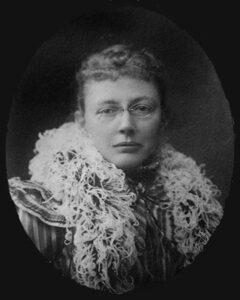
Agnes Repplier
Agnes Repplier (April 1, 1855 – December 15, 1950) was an American essayist whose articles appeared in the Atlantic Monthly and the Catholic World.
* * *
The most beautiful and impressive thing in the World’s Fair was, to me, the Court of Honor, as seen for the first time in the dusk of an August evening. The white buildings rose mistily from the water; the columns of the Peristyle gleamed in the twilight; even the huge and hideous statue of the Republic was softened by the friendly gloom into vaguer outlines, and more harmonious coloring. The scene was inexpressibly lovely that night, a true land of enchantment; but I was never able to repeat the illusion. I never, in long weeks, had such another gray and golden dusk through which to look at it.
The Convent of La Rabida, however, no matter when I saw it, was a lasting and genuine delight.
.
AGNES REPPLIER
PHILADELPHIA, PENN.
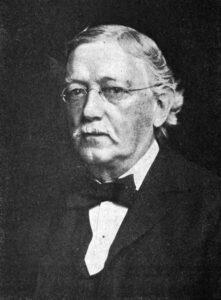
W. J. Rolfe
William James Rolfe (December 10, 1827 – July 7, 1910) was an American educator and Shakespeare scholar.
* * *
At Chicago I was most impressed at first, as everybody must have been, by the outside view of the White City—the grandeur of the main buildings, their effective grouping, and the admirable management of water in the adornment of the grounds; next, with the beauty of certain of the buildings, especially the Art, Fisheries, and Administration Buildings, and the ugliness of a few others, notably the Government Building and some of those erected by single States. I was struck also by the skill and taste shown in the arrangement of the exhibits, particularly in agriculture, mining, electricity, and transportation. In the Art Building I was, on the whole, most interested by the sculpture and the United States loan exhibition of paintings. The illumination at night was indescribably fine.
Chicago itself seemed to me a great exhibition, no less wonderful in its way than the Fair. Its parks, boulevards, and portions of certain main avenues are unsurpassed by anything I have seen in this country. The facilities for travel from one part of the city to another are the best I have found on either side of the Atlantic.
.
W. J. ROLFE
CAMBRIDGE, MASS.
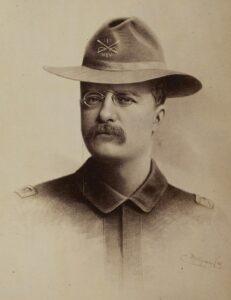
Theodore Roosevelt
Theodore Roosevelt Jr. (October 27, 1858 – January 6, 1919) served on the United States Civil Service Commission under President Harrison. An avid conservationist and naturalist, Roosevelt was the indefatigable force in erecting the Hunter’s Cabin at the 1893 World’s Fair. He served as the 26th president of the United States from 1901 to 1909.
* * *
The buildings, of course; or at least the buildings taken in connection with the general landscape effect; and most of all the South Lagoon and all that was around it, whether in the bright sunlight, or under the moon, or when there was an illumination on a dark night.
.
THEODORE ROOSEVELT
WASHINGTON, D. C.
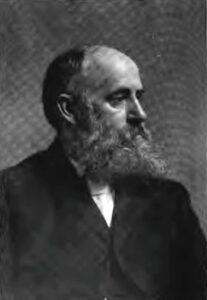
Horace Scudder
Horace Elisha Scudder (October 16, 1838 – January 11, 1902) was an American author and historian who served as editor of the Atlantic Monthly from 1890 to 1898.
.
* * *
.
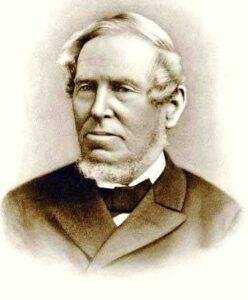
Samuel Francis Smith
Samuel Francis Smith (October 21, 1808 – November 16, 1895) was a Baptist minister and author. He is best known for having written the lyrics in 1831 to “My Country, ’Tis of Thee” (originally called “America”), which was sung at his funeral two years after the Fair. He visited the Exposition in the early summer.
* * *
My visits to the Columbian Fair in Chicago were in the month of May, about three weeks after the formal opening, and while many of the exhibits were still reposing in the boxes in which they had been brought to Jackson Park. Nevertheless, so many of the beautiful buildings had been erected, and so many articles were ready for inspection, that I think I am entitled to hold and express an opinion concerning the Fair—in general, if not in detail. My prevailing impression was, how magnificent was the conception of the Directors, and how completely successful the execution. The plan of the whole exhibited marvellous grasp of intellect, a wonderful appreciation of the demands of the occasion, and matchless skill in manipulating the will of the workmen, so that the result was a perfect accomplishment of the grand ideal. No one could have demanded a more complete success.
S. F. SMITH
NEWTON CENTRE, MASS.
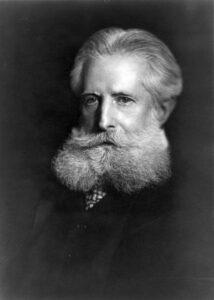
Edmund Clarence Stedman
Edmund Clarence Stedman (October 8, 1833 – January 18, 1908) was an American poet, editor, critic, essayist, and in the inaugural class inducted into the American Academy of Arts and Letters. He presented at the Word’s Youth Congress at the World’s Fair.
* * *
Of course, the ensemble, of which we have all heard so much that I think Mr. Eugene Field has missed a chance in not writing a lyric with that title and refrain—of course the White City itself—the vision of Claude and Turner, which they never fully related, become real at last.
I could not make up my mind whether it was more ravishing in its daylight sheen, or with that mighty wonder of illumination—that electric radiance quite beyond the light of Milton’s “starry lamps and blazing cressets, fed with naphtha and asphaltus.” St. Tammany’s many-hued fireworks, on Manhattan night, brought about an even more apocalyptic transformation. And still this beauty was earth-born, and therefore the more enthralling for its charm of evanescence.
And why need it wholly die? “The Vanishing City” should leave something behind it for a sign. Atwood’s Art Building, in flawless Ionic proportions, surely may have the staff veneering replaced by marble. And his Peristyle, with its hall on either side! Suppose the globe were but half-explored, and that an adventurous argosy should reach an unknown harbor with such an entrance-gate. Just think of it! I believe that thousands of Americans who have seen the Peristyle would aid to reproduce it where it now stands, would say to that colonnade and its arch and images and wings—Endure. Foreign critics object to New World expression of beauty in this antique perfection. What went they out for to see? They should comprehend that to rouse the sense of beauty itself among our faraway plain people was the highest mission of the Fair. It sent thousands back to unlovely homes with the beginning of a noble discontent.
The Midway Plaisance was Bunyan’s Vanity Fair. I looked around for Christian, and possibly for the burning of Faithful—whose soul, despite the cry of the old world for something “structural,” could never have reached Heaven via the Ferris Wheel.
E. C. STEDMAN
NEW YORK.
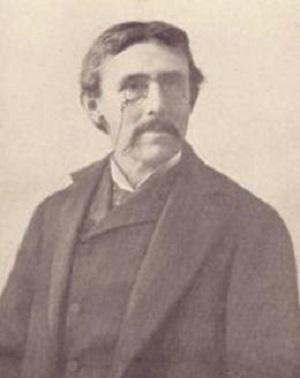
Maurice Thompson
James Maurice Thompson (September 9, 1844 – February 15, 1901) was an American naturalist, lawyer, novelist, poet, essayist, archer, and veteran of the Confederate army. He participated in the Congress of Authors at the 1893 World’s Fair.
* * *
The strongest, and what I think is the most enduring impression made in my mind by the World’s Fair at Chicago came of seeing our own people through their best representatives. The men and women and children swarming there from every corner of our great country were authentic exponents of our physical, mental and moral development. Well-fed well-dressed, bright, happy, inquisitive, bent upon seeing everything, swift-footed, tireless, they swept from building to building, a multitudinous embodiment of American energy. The White City was beautiful, the exhibits were marvellous, whichever way I turned a vista of wonderland opened. I stayed and strayed until I could stay no longer; went back time and time and time again. Each visit disclosed greater beauties not before dreamed of; but every time and always the people influenced me most. I sat for hours under the trees and studied them, and in the art-galleries, machinery halls and State buildings, at the restaurants and by night when the air was a color-dream, in the great city where they swarmed. What most impressed me? It was my country’s life pulsating around me, the heart-throb of modem Rome—America the young, the strong, the master of destiny, the unarmed and open-breasted conqueror of the world. I looked at Chicago and saw that her people were as cultured as those of Boston, I shook hands with Cincinnati and Louisville and they knew as much as New York and Philadelphia. The woman from New Orleans represented as sweet a culture as the woman from Hartford. The man from San Francisco scored as high as the man from Brooklyn. It was a noble exhibit, and now that we have seen it we know something of ourselves and may lay to heart a good store of honest self-respect. Let’s put aside pessimism for a hundred years; what do you say?
MAURICE THOMPSON
CRAWFORDSVILLE, INDIANA.
 Charles Dudley Warner
Charles Dudley Warner
Charles Dudley Warner (September 12, 1829 – October 20, 1900) was an American essayist and novelist best remembered as the co-author with Mark Twain of the 1873 novel The Gilded Age: A Tale of Today. Several of his pieces praising the World’s Fair are collected here.
* * *
The things most impressive at the Chicago World’s Fair are by this time common property. I should say that they were:—
1 . An ideal of Beauty never before created in a square mile on this earth. This ideal must strongly and permanently affect the nation.
2. The uniform good order, good humor, and civility of the visitors. A great feather in the cap of the Republic.
3. The example of administrative ability, of order, of honesty, of cleanliness, in a big city over-run by crowds. Take an illustration: Every night all the refuse removed and consumed in a cremator, close to the ground, without a single unpleasant reminder. Why cannot another city be as decently governed and have as good sanitary conditions?
4. The exhibits. As I had only about three weeks at the Fair, in three visits, I had not time to see much of the exhibits.
CHARLES DUDLEY WARNER
HARTFORD, CONN.
SOURCE
“Impressions of the World’s Fair” The Critic Nov. 25, 1893, p. 331–334.

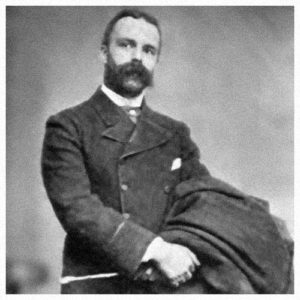 Julian Hawthorne
Julian Hawthorne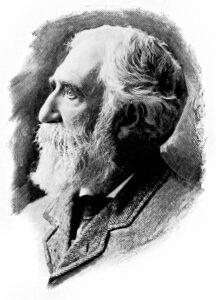 Charles Dudley Warner
Charles Dudley Warner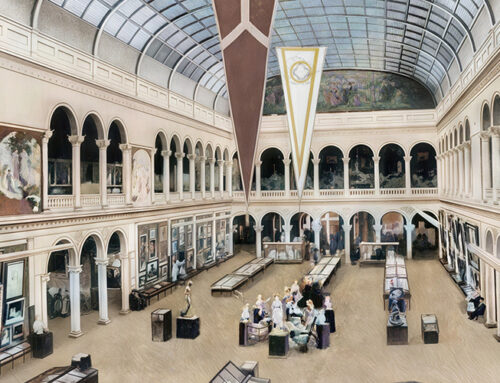
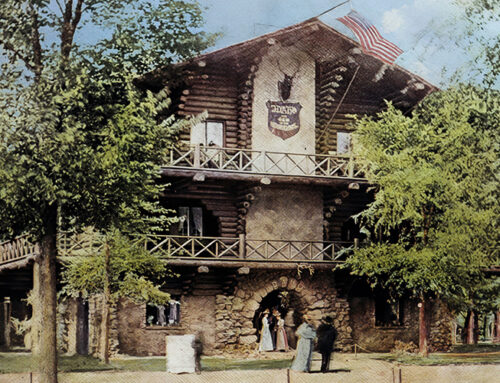
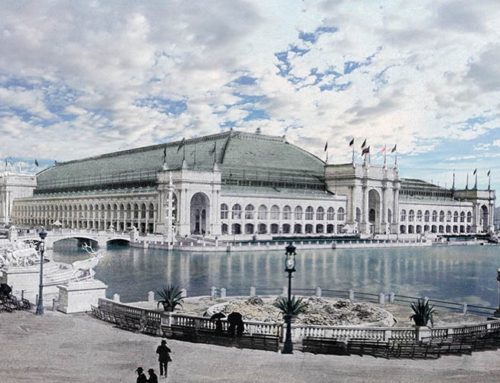
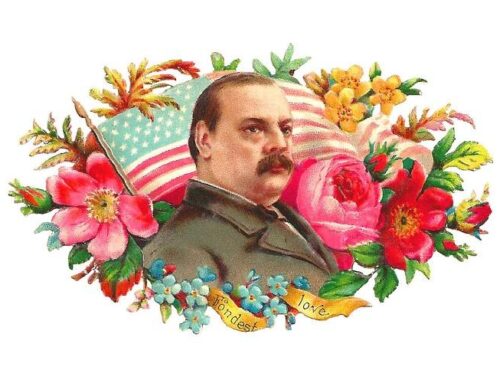
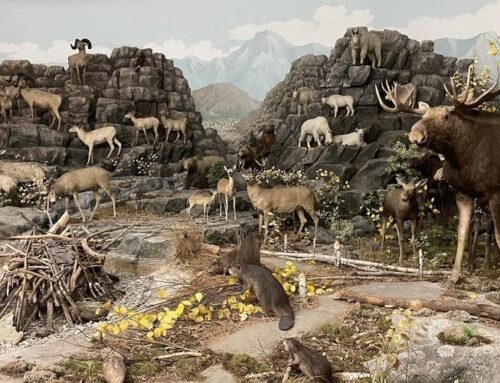
Leave A Comment